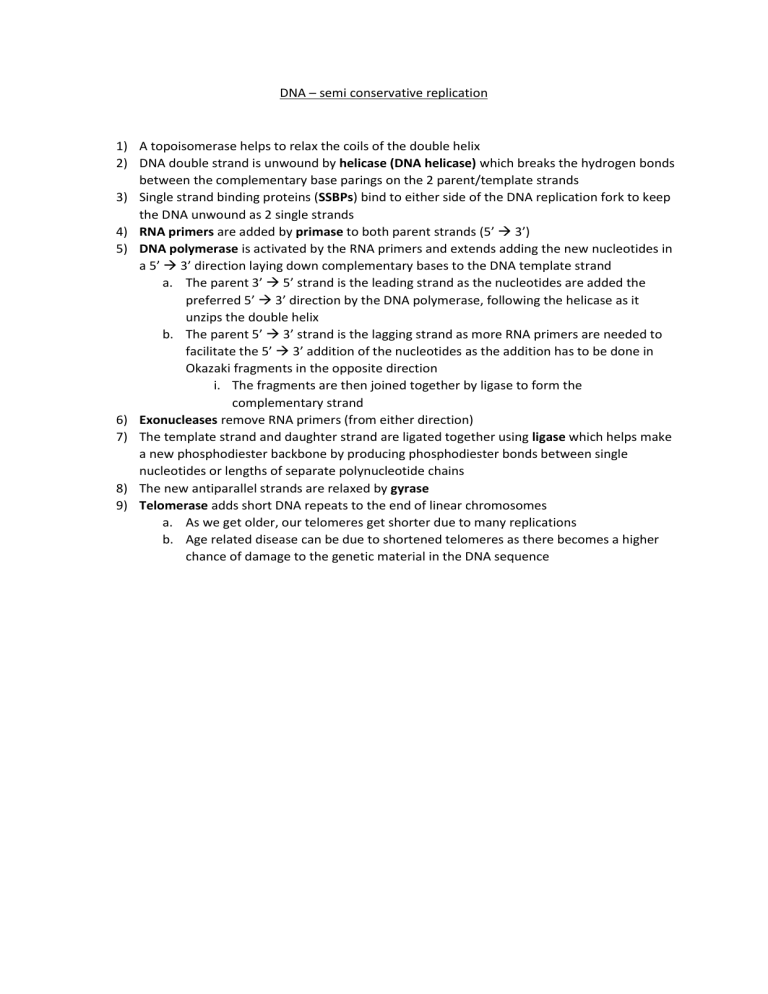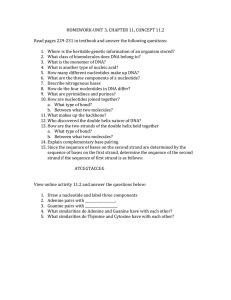
DNA – semi conservative replication 1) A topoisomerase helps to relax the coils of the double helix 2) DNA double strand is unwound by helicase (DNA helicase) which breaks the hydrogen bonds between the complementary base parings on the 2 parent/template strands 3) Single strand binding proteins (SSBPs) bind to either side of the DNA replication fork to keep the DNA unwound as 2 single strands 4) RNA primers are added by primase to both parent strands (5’ 3’) 5) DNA polymerase is activated by the RNA primers and extends adding the new nucleotides in a 5’ 3’ direction laying down complementary bases to the DNA template strand a. The parent 3’ 5’ strand is the leading strand as the nucleotides are added the preferred 5’ 3’ direction by the DNA polymerase, following the helicase as it unzips the double helix b. The parent 5’ 3’ strand is the lagging strand as more RNA primers are needed to facilitate the 5’ 3’ addition of the nucleotides as the addition has to be done in Okazaki fragments in the opposite direction i. The fragments are then joined together by ligase to form the complementary strand 6) Exonucleases remove RNA primers (from either direction) 7) The template strand and daughter strand are ligated together using ligase which helps make a new phosphodiester backbone by producing phosphodiester bonds between single nucleotides or lengths of separate polynucleotide chains 8) The new antiparallel strands are relaxed by gyrase 9) Telomerase adds short DNA repeats to the end of linear chromosomes a. As we get older, our telomeres get shorter due to many replications b. Age related disease can be due to shortened telomeres as there becomes a higher chance of damage to the genetic material in the DNA sequence

